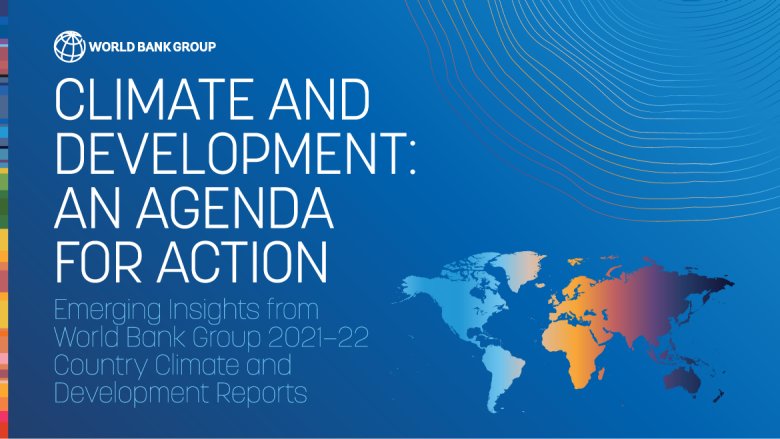>> Download the Full Report <<
To support the alignment of development and climate objectives at the country level, the World Bank Group has launched a new core diagnostic tool: the Country Climate and Development Report (CCDR). The CCDRs integrate climate change and development considerations and aim to help governments, private sector investors, citizens, and development partners prioritize the most impactful actions that can boost resilience and adaptation and contribute to global public goods by reducing greenhouse gas (GHG) emissions, while delivering on broader development objectives. The first set of 19 CCDRs covers 24 countries. Together, CCDRs provide three main lessons.
First, climate change poses a major threat to long-term development objectives, especially poverty reduction. With appropriate adaptation policies, countries can reduce impacts in the short term. But even with appropriate adaptation, successful development and poverty reduction require rapid reductions in global GHG emissions, which requires first and foremost accelerated mitigation action in high-income countries and other large emitters.
Second, climate objectives can be achieved without compromising development, but only if key conditions are met. These key conditions include well-designed climate actions, strong participation of the private sector, adequate international support, and appropriate complementary measures to manage unavoidable trade-offs, protect poor people’s consumption, and facilitate a just transition. Most CCDR low-carbon development pathways are more ambitious than existing NDCs, reducing total GHG emissions in CCDR countries by 70% compared with a current-policy scenario. Taken together, however, they would still lead to significant emissions in 2050, showing the need to adjust these pathways to increase ambition over time, but also for enhanced support from and action in HICs, including with negative emissions.
Third, success requires challenging policy reforms, reallocation of scarce public resources, increased mobilization of private capital, and increased financial support from the international community. Resilient and low-carbon pathways can deliver net economic gains, if additional annual investment needs averaging 1.4 percent of countries’ GDP over 2022–30 can be met. The transition to more resilient and lower-carbon development also requires managing political economy obstacles; strengthening institutional capacity; accelerating diffusion of new technologies; and the careful management of negative distributional outcomes. To overcome these and achieve a just transition, all countries will require carefully designed policies and reforms and scaled-up financial support from richer economies. Low-income countries face higher investment needs, often exceeding 5 percent, and will need access to sustained levels of concessional resources, including grants.
The CCDRs recognize that in each country, a government-led prioritization and sequencing exercise is an essential step to translate the diagnostic into a country-owned strategy and implementable investment plan. Beyond the World Bank Group portfolio, a CCDR can be an opportunity for governments and private sector investors, citizens, international financing institutions, and World Bank partners to engage on development and climate action, with better country-level coordination.

